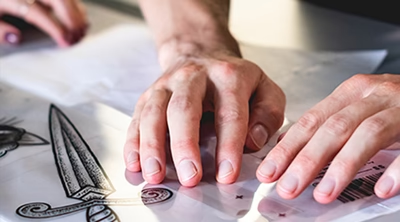6 Tips to Choose the Right Transparency Film
Having the best quality transparency films can significantly impact the quality of your presentation. Most of the time, high-quality transparencies create some distinctive visuals. Even if you look deeply into the current trend or boom in the screen-printing industry, it has increased demand for transparency film for inkjet printers.
However, choosing the right transparency film for inkjet printers is as challenging as choosing the right transparencies for your project. You may require the correct transparency film to create a stencil without any seamers.
6 sure shot tips to choose proper transparency film
Here are a few tips that may guide you through the selection process of transparent film for inkjet printers.
- Printer type you have
Always ensure your printer is compatible with your type of transparency film. You can have fair judgment if you countercheck this information through the printer's user guide. Also, if you are using a good quality printer, it will determine the color-coded overlays & resolution used in the project.
- Overall size of your sheets
Yes, size matters when it comes to transparency film for inkjet printers. It will directly affect how you feed the printer. You will find a variety of transparency films to choose from; consider the size of your painter, then go to the sheet. If you avoid this aspect, you may not derive the desired results after pushing the larger piece of paper into the feeding slot.
- Ink drying time
If you are going for the dry material, you will require to figure out the dry cloth in different transparency film brands available in the market. Choosing a quick-dry film will shorten the printing time, and you won't have to wait to proceed to the following printout. Dry printing also helps reduce the risk of smears or any other blotches.
- The thickness of sheets used in the printer
Another factor you need to keep in mind is the density of your paper sheets. You will have overhead presentations if you use thicker transparent film for inkjet printers. As the material is thick, if you place it on the projector, it won't fold improperly or deform.
- Waterproof material
Suppose you wish to have transparent paper, which is easy to maintain, then go for waterproof materials. Another benefit of waterproof material is "the ink will not wash away a machine wash or accidental water splash."
- Invest in quality transparency films
Different brands offer varying pricing for the same product, and the only difference is the quality of the transparent sheet. If you go for a high-quality product, you might see high pricing, but it will be worth the investment. First, determine your budget limits and look for the most affordable yet appropriate model.
Takeaway
Transparent films have a significant impact on the quality of the project. If you go by the guide, you will not only have quality results but also save a little extra in your pocket. Even if you have to make some investments initially, don't worry. In the long run, the result or profit will be much bigger! We hope our article will make you earn some sure-shot tricks to ace screen printing even if you are new to the concept.
This Post is written by Screenprintdirect

.webp)


Comments
Post a Comment